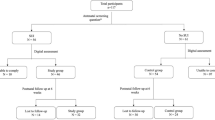Abstract:
The purpose of the study was to investigate the prevalence of urinary incontinence during pregnancy and the postpartum, and to examine postpartum pelvic floor muscle strength. Eight weeks postpartum the prevalence of urinary incontinence and pelvic floor muscle strength was registered. All women in a Norwegian community, delivering at the local hospital during a 1-year period, were included in the study. The final study group consisted of 144 women (72%). Data concerning the prevalence of urinary incontinence was collected by a structured interview and clinical assessment (pad test) 8 weeks postpartum. Pelvic floor muscle strength was also measured. The prevalence of urinary incontinence during pregnancy was 42%. Eight weeks after delivery the prevalence of self-reported urinary incontinence was 38%. There was a difference between self-reported symptoms and urinary incontinence as assessed by the pad test. Symptoms of fecal incontinence postpartum were reported by 6 women (4.2%). The prevalence of urinary incontinence was found to be nearly the same 8 weeks postpartum as during pregnancy. This documents the need for a strategy to prevent and treat urinary incontinence during these periods.
Similar content being viewed by others
Author information
Authors and Affiliations
Additional information
Rights and permissions
About this article
Cite this article
Mørkved, S., Bø, K. Prevalence of Urinary Incontinence During Pregnancy and Postpartum. Int Urogynecol J 10, 394–398 (1999). https://doi.org/10.1007/s001920050067
Issue Date:
DOI: https://doi.org/10.1007/s001920050067



